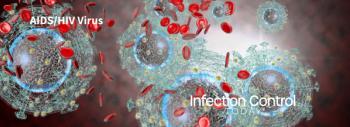
Researchers Find Moral Barriers to Getting HPV Vaccine
A survey of first-year Grand Valley students showed the biggest barrier to receiving a human papillomavirus (HPV) vaccine was moral or religious beliefs, or a perceived promotion of sexual behavior, according to graduate physician assistant researchers.
Physician assistant studies majors Jamie Phillipich, left, and Margie Webb surveyed 1,000 first-year students to assess the influence media has on the perception of HPV and vaccine compliance.
A survey of first-year Grand Valley students showed the biggest barrier to receiving a human papillomavirus (HPV) vaccine was moral or religious beliefs, or a perceived promotion of sexual behavior, according to graduate physician assistant researchers.
Physician assistant studies majors Jamie Phillipich and Margie Webb surveyed 1,000 incoming students last fall as part of their master’s research project. They assessed the influence media has on the perception of HPV and vaccine compliance, and presented their findings at the Annual American Academy of Physician Assistants CME Conference in May. The HPV vaccines are commonly recommended for children ages 11-12 to protect against cervical cancers in women, and genital warts and other cancers in men.
Phillipich said she and Webb chose incoming first-year students in 2013 as that population was among the first to receive the vaccines when it was introduced in 2006 for girls and 2009 for boys. Survey questions included where students received information about the vaccine, HPV knowledge, vaccination barriers and vaccination status.
Results from the 146 respondents included the following:
• 51.4 percent reported receiving the Gardasil vaccination, and 40.3 percent received all three recommended doses.
• 91 percent reported moral barriers to the vaccination, higher than other barriers (lack of education, cost, lack of medical recommendation).
• Nearly 70 percent reported receiving information about the vaccines from their healthcare provider.
• 65 percent reported receiving information about the vaccines from media.
Webb and Phillipich said it’s important as future physician assistants to understand where their patients are receiving information to be able to give informed recommendations. They are currently writing a manuscript for publication of their findings; both are expected to graduate in December.
Source: Grand Valley State University
Newsletter
Stay prepared and protected with Infection Control Today's newsletter, delivering essential updates, best practices, and expert insights for infection preventionists.






